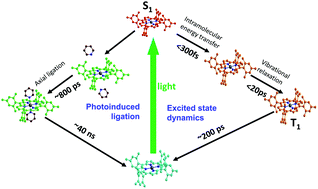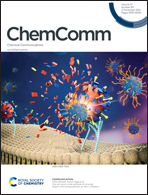Excited-state structural dynamics of nickel complexes probed by optical and X-ray transient absorption spectroscopies: insights and implications
Abstract
Excited states of nickel complexes undergo a variety of photochemical processes, such as charge transfer, ligation/deligation, and redox reactions, relevant to solar energy conversion and photocatalysis. The efficiencies of the aforementioned processes are closely coupled to the molecular structures in the ground and excited states. The conventional optical transient absorption spectroscopy has revealed important excited-state pathways and kinetics, but information regarding the metal center, in particular transient structural and electronic properties, remains limited. These deficiencies are addressed by X-ray transient absorption (XTA) spectroscopy, a detailed probe of 3d orbital occupancy, oxidation state and coordination geometry. The examples of excited-state structural dynamics of nickel porphyrin and nickel phthalocyanine have been described from our previous studies with highlights on the unique structural information obtained by XTA spectroscopy. We close by surveying prospective applications of XTA spectroscopy to active areas of Ni-based photocatalysis based on the knowledge gained from our previous studies.



 Please wait while we load your content...
Please wait while we load your content...
